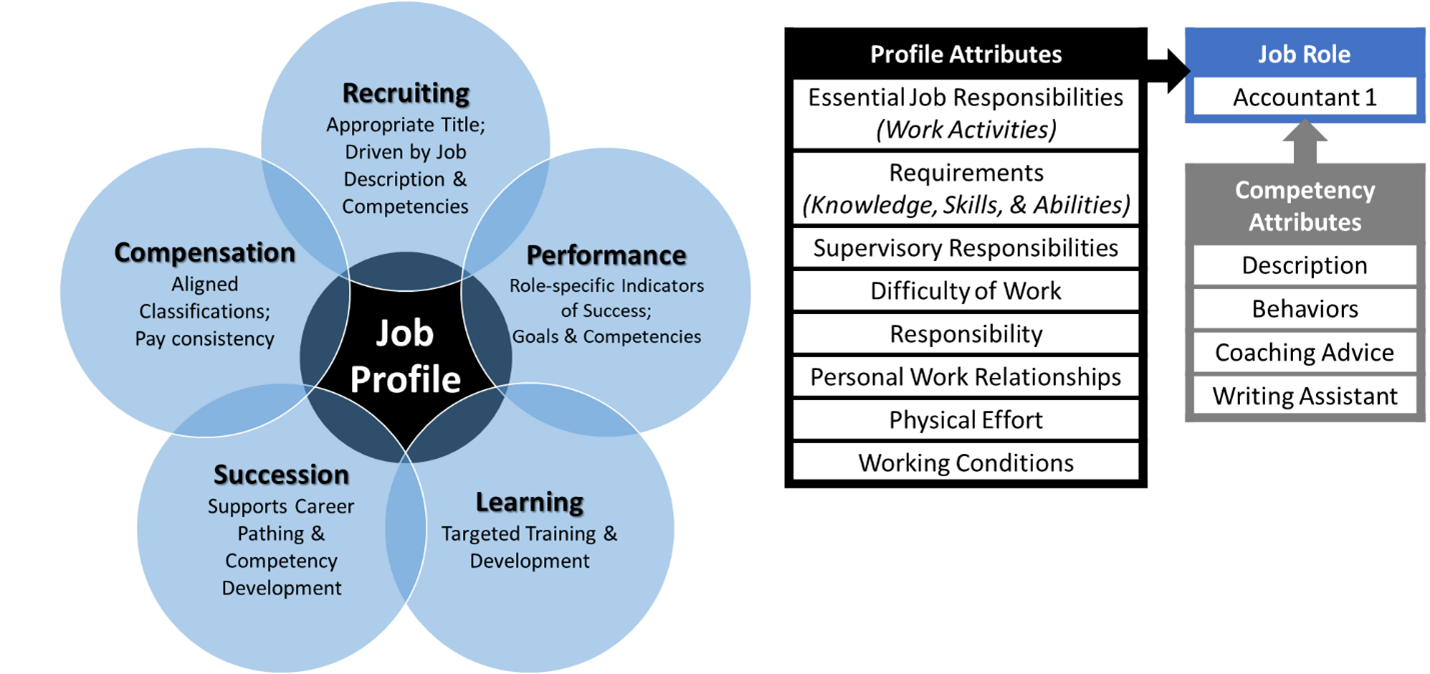 The competency framework defines our culture and identifies successful talent using Core Value and Role-assigned (or Role-based) Competencies. Core Value Competencies represent the beliefs and ideals of our organization and are assigned to all state employees and supervisors (managers).
The competency framework defines our culture and identifies successful talent using Core Value and Role-assigned (or Role-based) Competencies. Core Value Competencies represent the beliefs and ideals of our organization and are assigned to all state employees and supervisors (managers).
The Statewide and Supervisor Competencies outline expectations that align with delivering good government service to our citizens and promoting a learning culture for our staff.
- Statewide Competencies – Meeting Basic Work Expectations & Serving Customers (internal/external)
- Supervisor Competencies – Developing Talent & Managing Performance
Role-assigned Competencies represent the knowledge, skills, abilities, and behaviors that enable successful performance for individuals in the same role (or job code). All competencies can be improved with targeted training and measured by observing behaviors and outcomes.
Target Outcome(s):
- A successful rating or higher on each assigned competency.
Action(s) by Role:
- Managers:
- Ensure the competency assignment is communicated/confirmed when goals are set for the review period.
- Create a plan with the employee to achieve successful outcomes if they are having difficulty consistently exhibiting a behavior successfully.
- Share frequent observations and feedback about competencies.
- ‘Frequent’ should be based on the needs of the business; however, biweekly discussions are highly recommended to ensure performance is consistent overall.
- Individual contributors and front-line employees:
- Clarify how competencies align with the expectations of the role.
- Request feedback to understand where improvement is needed and create a plan to achieve successful outcomes.
- Share any barriers or challenges with your supervisor.
Resources Available:
- Job architecture (sometimes called job structure, job and competency framework, or leveling) refers to the infrastructure or hierarchy of jobs within an organization. A job and competency framework provides a common language for job levels, job titling conventions, grades, career paths, spans of control, the criteria for career movement, and equitable compensation programs based on job value.
- INSPD maintains a statewide enhanced and centralized job and competency framework that contains job descriptions, competency assignments, and corresponding career paths to enable consistent, strategic HR service delivery across the state agencies we support.
- Role-based job profiles and competencies allow for clarity, consistency, and transparency in role definition and how hiring managers attract, select, manage, and develop talent.
- The Job Code Action Process ensures that hiring managers attract, select, manage, and develop talent using the accurate job description and competency assignment.